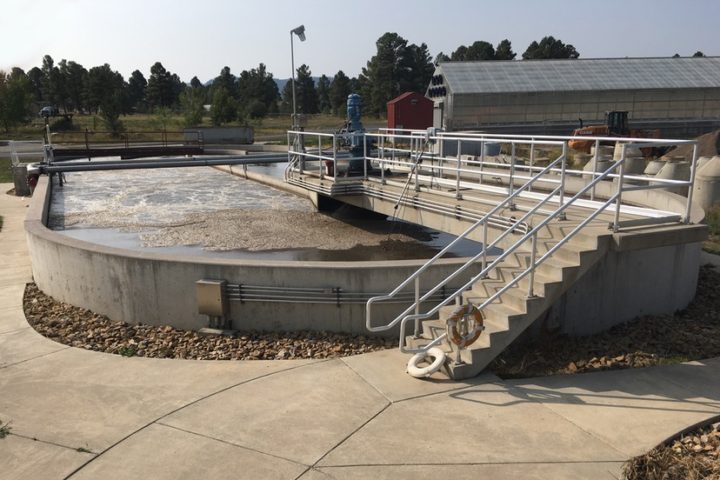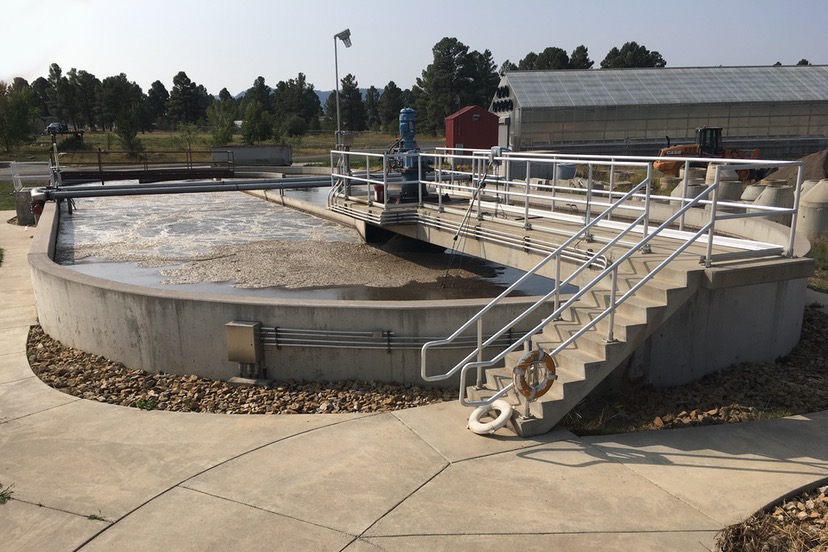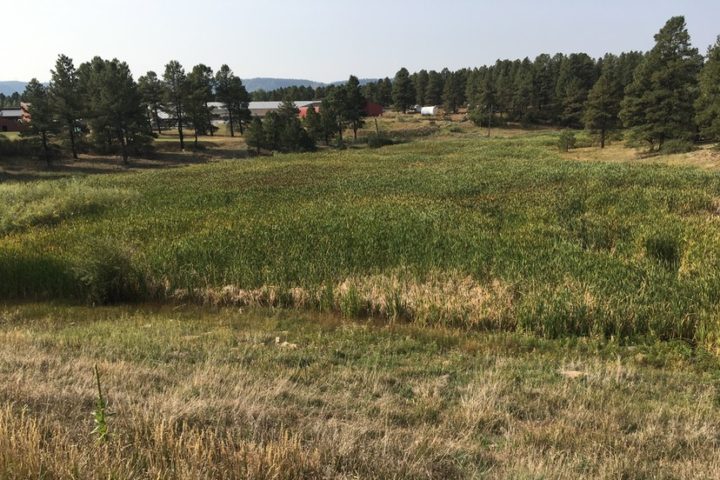When I sat down with Pagosa Area Water and Sanitation District (PAWSD) Manager Justin Ramsey last month to learn more about a potential $12 million upgrade at the Vista Waste Water Treatment Plant, I learned a few things about nitrogen that I’d not known. Like, why we have nitrogen in our water in the first place, and why the Colorado Department of Public Health and Environment (CDPHE) might be requiring such an expensive upgrade.
“The existing Vista treatment plant was built in, I think, 2004, and it was designed to meet the [water quality] requirements of the day,” Mr. Ramsey explained. “We were required to get rid of organic nitrogen. So when you flush your toilet, the ammonia that’s in there — most of it is ammonium, NH4 … and to treat that, you use aerobic bacteria that break it down, and turn it into nitrate and nitrite… and that’s called inorganic nitrogen.”
Aerobic bacteria require an oxygen-rich environment in order to convert NH4 into NO3 (nitrate) and NO2 (nitrite). The oxidation ditches at the Vista WWTP provide just such a pleasant environment for the busy little bugs, with a constant flow of air bubbling into the tank.
“Our treatment plant does a wonderful job, getting rid of ammonia, and gets it down to 2 milligrams per liter (2mg/L). It does a good job of that. But by doing that, the inorganic nitrogen goes up. Our plant was never designed to get rid of inorganic nitrogen. It takes anaerobic bacteria to break that down.”
In order to get rid of the inorganic nitrogen in the water, PAWSD needs a process to convert it into nitrogen gas. Anaerobic bacteria live in an oxygen-deprived environment, and can convert nitrate and nitrite into harmless nitrogen gas, N2 — the main component of the air we breathe. The Vista treatment plant currently has no anaerobic treatment capacity. But if CDPHE wants to enforce Regulation 85 at the PAWSD plant, then… is PAWSD looking at a $12 million plant investment?

Mr. Ramsey:
“It’s going to take substantial infrastructure changes to allow us to remove inorganic nitrogen. We’re probably going to have to build something similar to our oxidation ditches, but without the oxygen bubbling through, so anaerobic bacteria can break down the inorganic nitrogen.”
A new limit on the release of inorganic nitrogen was established by CDPHE in Regulation 85, back in 2012 — but because the PAWSD plant was discharging less than 1 million gallons per day, they had been exempt from meeting the nitrogen limits detailed in that regulation.
Until now.
When PAWSD recently renewed its waste water discharge permit, “they told us… oh, by the way, you now have to meet Regulation 85… Completely unexpected. Was not part of our ten-year capital investment plan…”
PAWSD was given until 2027 to implement the improved treatment process. Now, to find a way to lower the inorganic nitrogen to less than 10 mg/L. Mr. Ramsey suspects the cost of the plant upgrade will be between $9 million and $12 million, based on costs incurred by other Colorado sanitation districts.
There is an alternative, of course. Most of the nitrogen in our waste water comes from urine. If we could all stop peeing in the toilet, and instead pee out in the backyard, PAWSD would not be facing this expensive problem. And some very preliminary research also suggests that a low-protein diet will result in less nitrogen in your urine. Maybe we should be marketing Pagosa Springs as a haven for vegetarians?
Following our conversation, Mr. Ramsey took me on a tour of the treatment plant, and we viewed the (seemingly crystal clear) water flowing out and into a huge wetlands of flourishing cattails, just north of the PAWSD treatment facility and immediately west of Borns Lake Reservoir, (also known as Lake Forest). We chatted about the fact that plants require nitrogen to grow, and that the health of the cattails might be related to the nitrates and nitrites flowing into the Borne Draw. But… is it possible that these plants are further ‘purifying’ the PAWSD effluent, before it reaches Martinez Creek at the far west end of the Draw?
Maybe this living vegetation is already doing the work that a $12 million facility upgrade might struggle to perform?
To understand these questions better, I wanted to learn more about nitrogen, and plants. Turns out, ‘nitrogen’ is a terribly complex — and serious — problem.
For most of homo sapiens’ 10,000-year experiment with agriculture, humans had invented simple ways to add necessary materials to the soil. Crop rotation was one common way to ensure the soil’s fertility and improve crop yields. The addition of animal and green manures were another way. Without knowing anything at all about our modern chemical theories, farmers were amending nitrogen to the soil in safe, sustainable amounts. Without knowing anything about bacteria, farmers were helping microorganisms living in the ground to pull nitrogen gas from the air and ‘fixing it’ in the soil, to then be used by plants.
But humans are rarely satisfied with the way previous generations handled things. In the early 1800s, Europeans discovered that they could noticeably increase crop yields by adding chemical nitrates — mined mainly in South America — to the soil. Crop yields increased, year after year. But populations increased even faster.
When war intervened and shipments of nitrates were cut off, a German chemist named Fritz Haber found a method to create ammonia artificially, using nitrogen gas and methane, processed under high pressure and at high temperatures. The resulting ammonia could, through another process, be made into fertilizer. It was also be used to create explosives.
Bombs.
Haber’s basic process is still in use today. From an essay by Nathanael Johnson, “Death by fertilizer”, publish on Grist.org on October 2, 2018:
Since Haber’s discovery, humans have nearly doubled Earth’s natural flow of fixed nitrogen, overwhelming the capacity of ecosystems to remove it. The resulting buildup is poisoning the planet’s waterways, creating a crisis some consider even more threatening than the buildup of carbon dioxide in the atmosphere…


